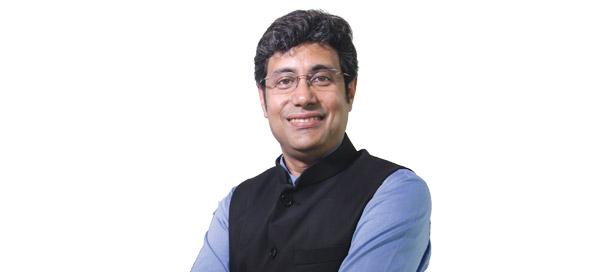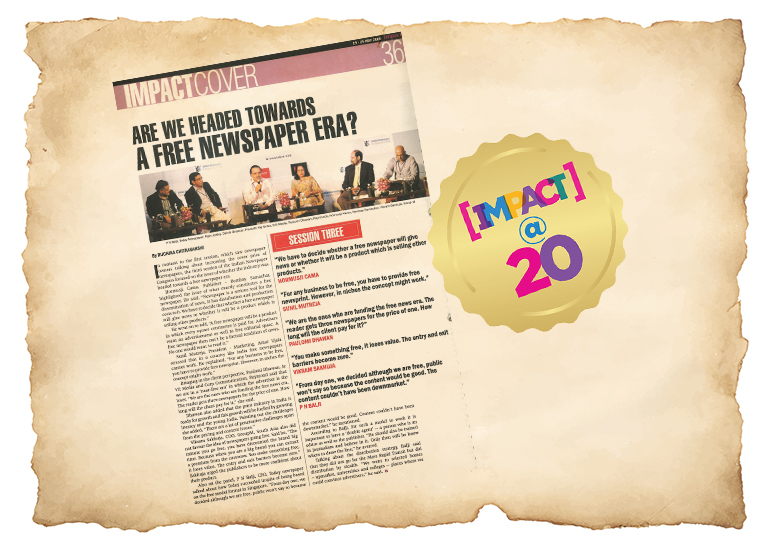Q] What was the insight behind the Thums Up ‘Veer’ initiative which aims at unleashing the potential of the specially-abled?
We are setting out on a journey along with Boniface Prabhu, one of the pioneers of quadriplegic wheelchair tennis, who is also a Thums Up brand ambassador. Prabhu will meet multiple people during the drive from Kanyakumari to Kashmir and spread the message that no disability is big enough if you want to win in life. Just like Thums Up’s tagline ‘Main Hu Toofani’, the spirit lies within each individual. Through this initiative, we are trying to drive inclusion and create employment for the specially-abled with our partners, American India Foundation, Being Human Foundation and The Hans Foundation. About 2000 people have been trained through the ‘Veer’ programme and 1,000 have been employed. So, it’s a cascading movement.
Q] Why did you time the launch of your latest offering, Fanta Green Mango, with the ‘Make in India’ Week?
The clarion call for such a drink was given by the Indian Prime Minister, and I am glad that we were able to rise to the occasion and present the offering during the ‘Make in India’ Week. Most importantly, create a product rooted in an authentic Indian flavour. It would have been very easy to import a juice variant of Fanta from across the world and run it in India. But what we really wanted to do is to keep the spirit of ‘Make in India’ going, and for that I challenged my technical team to create a variant for India which is rooted in Indian taste. We tried multiple options, but what stood out is the green mango. So, it’s a variant of Fanta with 10% juice in it.
Q] What kind of campaign and ad spends are you looking at for Fanta Green Mango, which is not all juice and not just fizz?
Advertising today is not about the 30-second spot anymore. You will see us experiment across Internet, through mobile, TV and Outdoor. In a company and brand like Coca-Cola, which is 129 years ‘young’, my job is to keep this portfolio of loved brands relevant. The way I see it, a new generation of drinkers emerges every six-seven years. How do I make sure that I create an offering of products and ommunication which touches the lives and hearts of these new consumers? That’s the question I need to answer all the time. Another important aspect is innovation which can also come from new packaging. But that apart, you will see a range of advertising campaigns from Coca-Cola because we have a bouquet of brands – from sparkling drinks to Fuze, Maaza and Vio. Overall, we have come up with a global campaign Coca-Cola ‘Taste the Feeling’ across 200 countries. The initial response is very encouraging.
 Q] This is a new category for Coca-Cola, so why was it launched under the existing Fanta umbrella as opposed to giving it a new identity like the Vio?
Q] This is a new category for Coca-Cola, so why was it launched under the existing Fanta umbrella as opposed to giving it a new identity like the Vio?
Fanta has a range of fruity flavours like orange, black grape formulation for South of India, apple, etc. Even Fanta Portello is doing very well. For the first time, we have taken the flavours story to a juice story. But we had to launch it under the Fanta brand because of the fun element associated with it. The fun of sparkling and the seriousness of juice has a nice synergy and we are trying out real juice for the first time. If I am allowed to stray into Hindi a little bit, I’d like to say ‘Jo khatak ta hai who atak ta hain’. Fanta Green Mango has a nice, sharp and edgy taste. And because this is a taste jo khatkega, I presume atkega bhi.
Q] To what extent will the partnership with Grofers help, considering that bottled drinks are off-the-shelf purchases, especially during summer?
We are actually leading the way in e-commerce. We launched Coke Zero with Amazon, and the results were amazing. For two weeks, it was available only on Amazon and got an overwhelming response. For Fanta Green Mango, it’s available on Grofers, but we are going to extend the sale to other channels as well. So, e-commerce allows me to do segmented marketing to an appropriate target audience so that I am not spraying and praying. I am reaching the right audience for a certain product in the portfolio. You will see more of that going forward.
Q] With the wave of health consciousness in the country, would you say people are moving away from aerated drinks?
Moving away is a relative term. Today, in India, the per capita consumption of sparkling drinks is very low. But if you look at the data over the last four-five years, the momentum behind sparkling drinks has been quite encouraging. People need beverages for multiple occasions, but not the same beverage across multiple locations. So, if I have to be a serious non-alcoholic ready-to-drink player, which Coca-Cola India is, then I need to provide products for different locations. So it is not a question of carbonated versus non-carbonated. It’s a question of providing a loved array of beverages which the consumers can pick up for different needs during the course of the day and at different locations. So I am very bullish. I am bullish across the category and I believe that it is important for me as a marketer to be present across the consumer’s life whenever a beverage is required at arm’s reach when desired.
Q] Around 80% of the branded juice segment in India is said to be from imported fruit. Will that hamper the growth of the fruit with fizz category at Coca-Cola?
The reason that we went for Fanta Green Mango is to make sure that we do justice to the true holistic ‘Make in India’ proposition. So as we look at more offerings in the Fanta space, our primary goal is to create Fanta with juice, which is locally manufactured and locally sourced. So, as we look at expanding this portfolio, our primary focus will be on juices which are manufactured in India.
Q] One of your highest-selling products, Maaza, completed 40 years in India but even today only 20% of the Indian population has tasted it. How will you solve the problem of penetration?
It’s a great question. Here, the discussion around brand versus package comes into play, route to market comes into play. Our flagship brand has only penetrated 20% of the population, so the need to become more widely available through multiple pack options becomes important. The tetra packs have worked well in this case and we are hoping to use that further. We are focusing on creating multiple packages and modes of distribution. It’s difficult to penetrate all 6,40,000 villages in India in one shot. The ambition is big, but the journey is long, and what it requires is oodles of patience and series of steps in the right direction. And I believe we are taking the right steps.
Q] Tell us about an interesting marketing experience in your journey so far.
This one is from my early days of selling soap for a large company. I was at a retail store along with my sales officer when one gentleman came up and asked for a local brand of soap. Meanwhile, another gentleman came in and started a conversation with the first. When the shop-keeper gave him the local brand of soap he asked for, he turned and said, “No, I didn’t ask for this, give me the soap which is made by the multi-national brand.” He named the soap from the company I worked for. The retailer said sorry and handed it to him. I was amused, so I walked across to the gentleman who had just bought the soap, and said, “Listen, I distinctly remember you asking for the local brand of soap. But when he gave it to you, you wanted a different brand. Why did that happen?” He replied, “No, don’t say that loudly. The man who met me at the store is my brother-in-law. If I had taken the local brand, what would he have thought of my status? So, I had to buy the multinational brand.” It’s an experience which is 22 years old, but still tells me that if you provide value and have the right aspirational brand, people are going to pay for it.
























